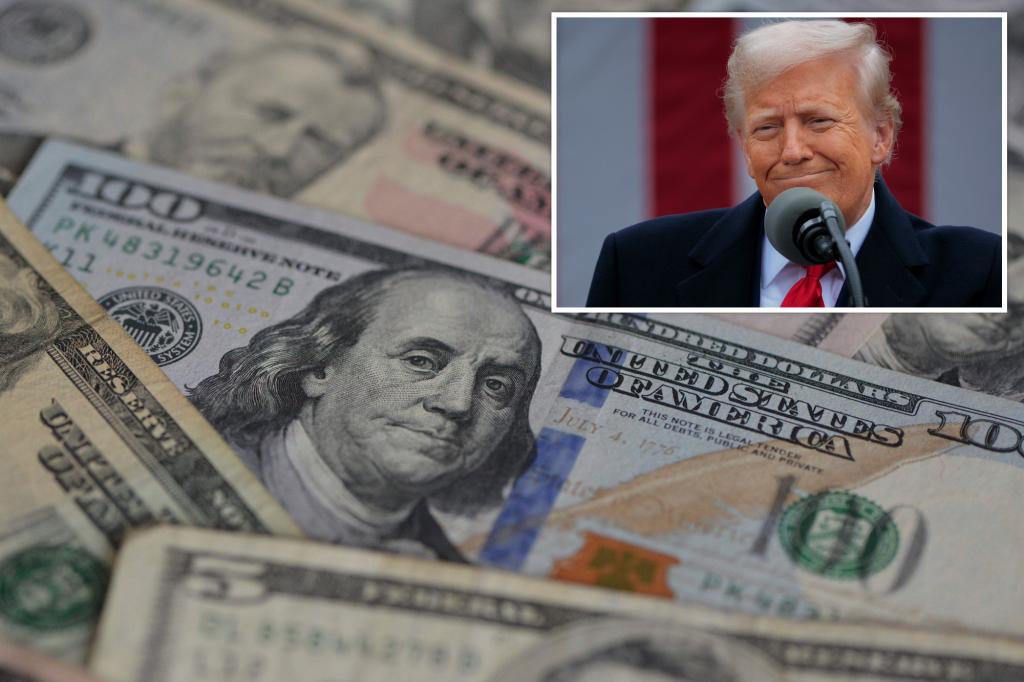
The US dollar has experienced its steepest first-half decline in over half a century, driven largely by apprehensions surrounding President Trump’s aggressive tariff policies. The currency weakened by 10.7% in the first six months of the year when compared to a basket of major trading partners’ currencies, marking the most significant drop since 1973. This was the year President Nixon decoupled the dollar from the gold standard, a pivotal moment in financial history.
The announcement of harsh tariffs during a “Liberation Day” press conference in April has been a catalyst for this decline. While some speculate that the weakening of the dollar could be part of a strategic move to bolster US manufacturing and reduce the trade deficit, this theory remains contentious. Stephen Miran, recently appointed Chairman of the US Council of Economic Advisers, has been linked to this idea, dubbed the Mar-a-Lago Accord, although he has publicly denied such intentions.
The Economic Strategy Behind a Weaker Dollar
A weaker dollar can make US exports more competitive internationally, aligning with President Trump’s goal to revitalize domestic manufacturing. This approach, however, is not without its critics. During his campaign for a second term, an official from the previous Trump administration suggested that currency revaluation might become a priority due to concerns that an overvalued dollar exacerbates the trade deficit.
Despite the speculation, President Trump has not explicitly endorsed the devaluation strategy. White House press spokesman Kush Desai emphasized the administration’s commitment to maintaining the dollar’s status as the world’s reserve currency. “Ten-year Treasury yields rallying down nearly 40 basis points since Inauguration Day, four consecutive expectation-beating inflation reports, and the trillions in historic investment commitments that have poured into the United States since Election Day are all indicative of the confidence that investors and markets continue to have in our economy and currency,” Desai stated.
Market Reactions and Expert Opinions
However, many financial experts argue that the tariffs are exerting downward pressure on the dollar, prompting global investors to reconsider their reliance on it. “Trump is definitely playing with fire,” commented Stephen Miller, a consultant for GSFM, a unit of Canada’s CI Financial Corp. in Australia, during an interview with Bloomberg.
While a weaker dollar theoretically benefits US exporters, the uncertainty surrounding global trade negotiations under the Trump administration complicates the landscape. A critical July 9 deadline looms for ongoing discussions with key trading nations, adding to the market’s anxiety.
“The dollar’s fall comes after it soared on Trump’s re-election win and peaked in mid-January on hopes he would bring a pro-growth mindset to the White House.”
In April, the announcement of unexpectedly severe tariffs led to a significant shift away from US investments. Rick Rieder, chief investment officer of global fixed income at BlackRock, noted in a forecast, “Full-scale de-dollarization, if it ever comes, is still a long way away.” Nevertheless, the diminishing confidence in the US dollar, traditionally a safe haven asset, is alarming and could be exacerbated by rising government debt.
Implications for the Future
The recent passage of Trump’s substantial budget bill, projected to add $3 trillion to the national debt, has further fueled concerns. The Senate narrowly approved the bill, which now awaits final consideration in the House. Investors worry that the combination of higher inflation and debt could sustain elevated interest rates and inflation.
“The concerns over higher inflation and debt have pushed long-term Treasury yields lower. The 10-year yield started near 5% this year and has steadily fallen, reaching 4.267% on Tuesday.”
Ben Emons, founder of FedWatch Advisors, shared his insights on CNBC’s “Fast Money,” stating, “I think we’re going to continue to have this higher pressure on the low end of the yield curve because we haven’t really dealt anything away with the deficit or inflation for that matter. In fact, there’s more risk now than anything.”
Looking ahead, the interplay between US economic policies and global market reactions will likely dictate the trajectory of the dollar. As negotiations with trading partners progress and domestic economic strategies unfold, the world will be watching closely to see how these dynamics influence the currency’s future.







